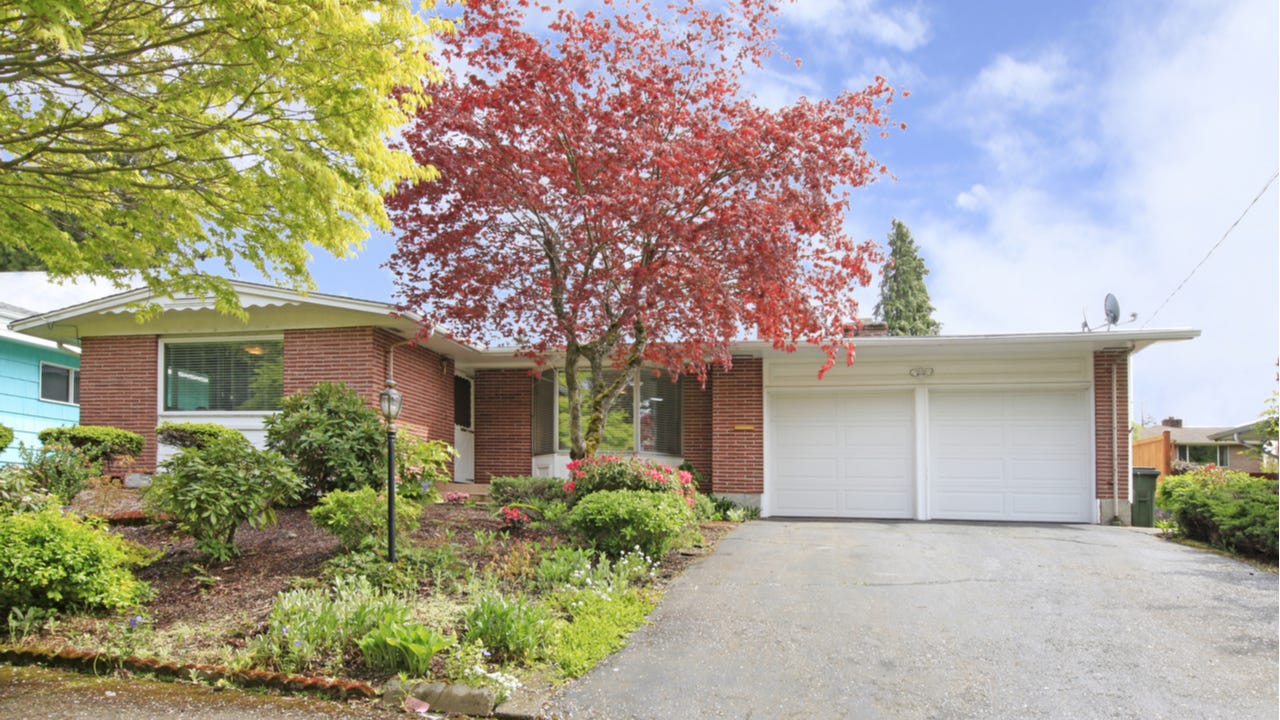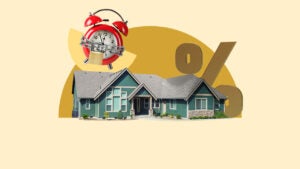Wraparound mortgage: What it is and how it can help buyers and sellers

Key takeaways
- A wraparound mortgage is a unique form of seller financing in which the seller keeps their mortgage and extends a loan to the buyer.
- The buyer pays the seller each month and the seller uses that money to pay their own mortgage.
- For this to be a legal option, the seller must have an assumable mortgage.
- While popular with those who can't qualify for traditional financing, wraparound mortgages carry risks for both buyers and sellers.
A wraparound mortgage is an alternative form of financing that can provide a path to homeownership for those who don’t qualify for a traditional mortgage. This type of financial arrangement can also be appealing to sellers, particularly if a home has been sitting on the market without any offers. But there are pros and cons to this type of mortgage that are important to know before proceeding.
What is a wraparound mortgage?
A wraparound mortgage refers to a lesser-known loan option in residential real estate. A form of seller financing, it’s a type of assumable mortgage, in which the buyer’s mortgage includes the previous owner’s existing loan. The buyer makes monthly payments to the seller, who, in turn, pays their own mortgage lender — and often pockets a bit of a profit on the difference between the two payments.
It’s far from a conventional loan, but can be an opportunity for homebuyers struggling to get a mortgage and sellers in distress.
How do wraparound mortgages work?
With a wraparound mortgage, the seller maintains their mortgage and acts as a lender to the buyer, extending them money to purchase the home. The buyer‘s mortgage “wraps around” the existing loan the seller has on the property.
Each month, the buyer makes payments to the seller. The seller then makes their own regular repayments to the lender that financed the original loan. In many cases, wraparound loans have a higher interest rate than the existing mortgage. As a result, the buyer’s monthly payments to the seller are often larger than the seller’s, allowing the latter to cover their payments and make a little profit.
The buyer and seller both must agree to the wraparound mortgage, with the seller first obtaining permission from their lender before proceeding.
After the terms are in place and a promissory note is signed to seal the deal, the seller might transfer the home’s title to the buyer right away or once the loan is repaid. Once the title is transferred, the buyer is considered the property owner.
Wraparound mortgages are in a junior or second lien position. That means if the buyer can’t or doesn’t make payments, the original mortgage lender — not the home seller — would be repaid first from the proceeds of a foreclosure sale. In other words, the lender would benefit before the seller is able to recoup any losses.
Wraparound mortgage example
Say a seller has a remaining mortgage balance of $100,000 with a 30-year interest rate of 5 percent on a home worth $200,000. The seller finds an interested buyer who is unable to qualify for traditional financing.
To cover wraparound mortgage risk, the seller agrees to a wraparound loan of $150,000 — including a $50,000 down payment — at an interest rate of 7 percent. The seller is able to pocket $100,000, the $50,000 down payment plus the $50,000 in excess of his or her debt. As they continue to make payments at the 5 percent interest rate, they are also able to make money off the 2 percent difference between their original rate and the new interest rate.
The wraparound mortgage doesn’t have to be greater than the original mortgage. The buyer and seller can agree to a loan that covers only the current principal.
Wraparound mortgage benefits
Wraparound mortgages can be advantageous for the buyer and the seller of a home.
Benefits for buyers
- Easier to obtain. “A wraparound mortgage is a good idea when the buyer does not qualify for any mortgage products with lenders,” says Benjamin Schandelson, a mortgage loan originator and head of marketing with MJS Financial LLC in Boca Raton, Florida.
- Smaller loan. The buyer might also be able to borrow less than if they were buying the property with a loan of their own, or pay a lower interest rate.
- Simpler, cheaper transaction. Buyers won’t have to wait through a lender’s long underwriting process, and may be spared many mortgage-related closing costs.
Benefits for sellers
- Profit potential. Along with any appreciation in the home price, sellers get to pocket the difference between their remaining mortgage balance and the wraparound mortgage. They also profit from the difference in their loan’s interest rate and the higher one the buyer is paying.
- Enhanced cash flow. The owner gets regular income each month in the form of the buyer’s mortgage payment.
- Selling strategy. Offering a wraparound mortgage might increase interest in the home, attracting buyers who normally might not be able to afford it.
Wraparound mortgage risks
No mortgage is perfect. Buyers and sellers face some wraparound mortgage risks.
Risks for buyers
- Unreliable sellers. “The biggest risk is the seller defaulting on the original mortgage, which can put the property the buyer is living in into foreclosure,” says Schandelson. You have to trust that the seller will keep making payments on their mortgage. If they don’t, the lender could seize the home, even if your own payment record is spotless. You also have to trust the mortgage was assumable in the first place; if the seller didn’t get permission for the wraparound, the lender could also foreclose or call the mortgage in.
- More expensive terms. The extra interest the seller is charging you may exceed conventional mortgage rates. They want compensation for their trouble/risk, especially since you may not have the best credit.
Risks for sellers
- Paperwork. Setting up a wraparound mortgage means you’re now in the home-financing biz with all that it implies: sending out statements/invoices, keeping track of payments, making sure you maintain records and accounting for the income on your tax return. If you don’t properly file, the IRS will not be happy.
- Unreliable buyers. You need to believe that the buyer will make their required payments on time and in full. After all, you’re still on the hook for your monthly payment, even if the buyer stops paying. “This means you either need to come out of pocket or miss payments, which can hurt your credit score,” says Schandelson. “You might also need to take legal action against the buyer for not paying, which can be costly.”
Alternatives to a wraparound mortgage
Although they can help buyers with poor credit or in high interest-rate environments, wraparound mortgages aren’t the only option. Consider these alternatives:
- Government-backed loans. These mortgages offer low down payment requirements and are available to borrowers who don’t have great credit scores. FHA loans come with the fewest restrictions. USDA loans and VA loans offer generous terms. However, you can only get one in an eligible rural area (USDA) or if you are or have been in the military (VA).
- HFA loan. Available solely through state housing finance agencies, HFA loans are geared toward first-time and low-to-moderate income homebuyers. You may be limited in the home’s purchase price and location, as it has to be within that state.
- Conventional 97 loan. Available through the government-sponsored entity Fannie Mae, this is a conventional mortgage with a 3 percent down payment requirement.
Sellers might also consider alternatives, such as:
- Renting. Using the home as an investment property could still bring significant profit with a similar risk level. You could give tenants long-term leases or set up a rent-to-own agreement.
- Renovating. If you’re selling because you need more space or want a nicer home, consider trying to expand or renovate your place, instead. Some strategic remodeling can make your home more valuable down the road, too.
Is a wraparound mortgage right for you?
A wraparound mortgage is a creative way for a buyer and seller to make a transaction happen, but there are risks on both sides. Buyers will need to find the right seller who’s willing to work with them, such as someone who’s having a difficult time unloading their home or having trouble meeting their mortgage payments. Sellers will need to make sure their lender allows this sort of arrangement, and perform due diligence on the buyer’s finances.
Before moving forward with a wraparound mortgage, it’s smart to consult with a real estate attorney who can advise on the risks and make sure agreements are properly drawn up to protect all parties. For example, buyers might want to add a clause that lets them make some of their payment directly to the lender. Sellers might want buyers to put a certain sum in escrow, as a cushion if the buyer is tardy or delinquent with payments.
“A wraparound mortgage might be an option for someone who can’t qualify for a traditional mortgage, such as conventional, FHA, VA or USDA loans,” says Rose Krieger, a Washington-based senior home loan specialist for Churchill Mortgage. “However, it comes with certain risks. For instance, if the seller defaults on their loan, it could result in foreclosure, putting the buyer at risk. Additionally, because wraparound mortgages only work on assumable loans, the process can take longer than a traditional mortgage.”
If you’re a seller, says Krieger, a wraparound mortgage could be attractive if your home isn’t selling in the current market or if you’re looking for sources of passive income. You could charge the buyer more than the remaining balance on your mortgage or set a higher interest rate than the one on your current loan, pocketing the difference.
You may also like







